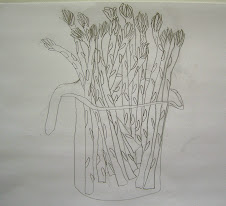
.jpg)
I first posted this to one "LeeFromVA," on the Huffington Post article What Barack Obama Could Not (and Should Not) Say, by Sam Harris. I repost it here:
Don't know whether you'll see this, but here goes anyway. "God impregnates some man's virgin wife so that the child can be viciously killed and therefore allow people into heaven?" etc. Yes, it's an amazingly difficult story to accept. "Even if it were true." "You'd think an all powerful God could find an easier way." Well, there is another narrative: that the universe began in a singularity, going from "nothing" to something in the blink of an eye. Fast forward, after the creation of other elements out of the combustion of hydrogen and helium, one finds planets spinning around stars in elegant elliptical orbits. "Life" (whatever that is) appears. Soon (a bunch of millions of years later) these earlier life forms have changed and changed until "primates" appear, some of whom develop so far as to be able to communicate with each other on Huff Po! One might call that "God's" (god in quotes) plan for whatever.
I find this alternate view to be a bit of a stretch too. But there it is. Primates with typewriters!
The problem of whether God exists or not, and whether a God who exists loves us or not, is an exceedingly complex question -- not the least when it concerns one personally. Does God care what happens to me?
The Bible -- in its historical accounts, its poetry, its metaphors, symbolism, parables, riddles, and other narrative devices -- asserts that God does exist and that God does "care." But do not suppose that it's a simplistic message. To the credit of the many Biblical authors, whoever they were, they deal head on with the apparent injustice of God. Why do innocent people suffer? Book of Job. Psalms. Proverbs.
I think the problem is when people try to turn complex ideas into something that fits a bumper sticker. Added to this problem is their tendency (you know who you are!) to irritate and annoy their fellows by endlessly repeating their simplistic notions.
God does work in mysterious ways (and I'll include modern physics as being among the mysteries) but I do sense (in my own life) God's presence and love. "We're not supposed to understand...."
I don't think we can understand is the point. Kind of like I cannot understand calculus but I'm willing to accept that it's probably true. Are we not supposed to question? Well, plenty of stories in the Bible are about people questioning. Genesis story of Abraham. God doesn't seem to mind the questions at all.
My question: does other peoples' misinterpretation of the Bible pose an obstacle to my faith? I don't think it should. I'm going to keep trying to understand the life I see around me. I think that such curiosity is a wonderful thing. I think it makes life an adventure. I hope I've convinced you of something similar. God is not giving us a school room test. No. Life is the real deal. And here it is.
A wonderful and mysterious thing. Best wishes to you.
We live in such amazing times. Where are the artists to paint the Cosmos now? When it has become so rich, complex and evocative? Where are the artists who might combine modern physics with spiritual understanding?
[illustrations: Giovanni di Paulo, Creation of the Earth and Expulsion from Paradise; Hieronymus Bosch, Garden of Earthly Delights (exterior panels)]






















